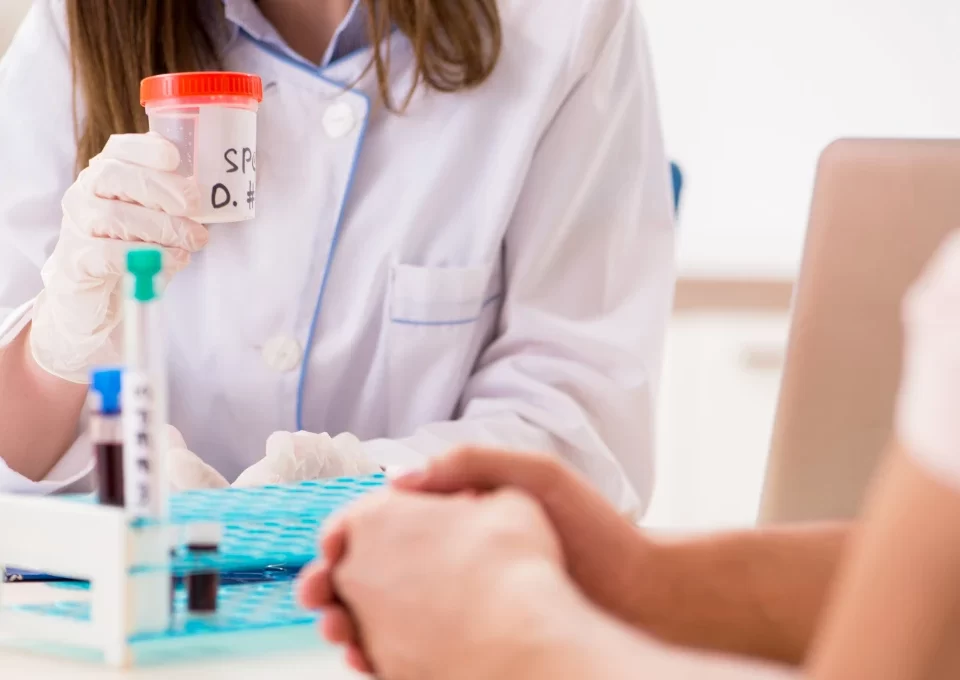Infertility is now a concern among humans. Therefore, scientists have developed means to treat infertility. In Vitro Fertilization is an Assistive Reproductive Technology (ART) to treat infertility. However, the doctor will inject hormones into the woman for the IVF procedure.
Definition
In Vitro Fertilization (IVF) collects eggs from the ovaries and fertilizes them with sperm within the laboratory. The embryo will form. Subsequently, the doctor will return it to the woman’s womb in 3 – 5 days for an implant, or freeze the embryo for storage.
Why IVF?
In Vitro Fertilization is the preferred form of infertility treatment for women over 40 years. IVF is an option if you have a health condition that prevents you from getting pregnant.
Aenean pharetra aenean facilisis torquent rutrum faucibus tellus rhoncus eleifend orci neque potenti.
Augue dapibus aenean habitasse curae magna vivamus ac enim fermentum dolor ad.
Pellentesque scelerisque in inceptos sagittis mauris curabitur posuere vulputate pretium pharetra etiam integer.
- Damage to the fallopian tube: Fertilization will not occur when the fallopian tube is blocked or damaged. Therefore, there is no space for the fertilization of eggs. The embryo will not travel down to the uterus due to this. As a result, IVF is an alternative.
- Infrequent or absence of ovulation: Eggs available for fertilization are few.
- Tubal ligation: This is the permanent prevention of pregnancies. The fallopian tube is cut or blocked. However, you wish to get pregnant after the procedure. In Vitro Fertilization (IVF) is an alternative.
- Genetic Disorder: Couples diagnosed with a genetic disease, consequently, can pass it to their child. As a result, an In Vitro Fertilization (IVF) procedure is perfect to avoid this disorder. The doctor will screen the embryo for genetic diseases. The doctor will further transfer the embryo into the woman’s uterus when free of impairments.
- Endometriosis: Tissues similar to the uterus lining grow outside the uterus. This affects the fallopian tubes, ovaries, and uterus significantly. An In Vitro Fertilization (IVF) procedure is an option here.
- Low sperm production or function: Poor movement, low sperm production, unusual sperm size, and shape will cause infertility. Subsequently, couples need healthy donors for the complete procedure of (IVF).
In Vitro Fertilization Phases
What are the phases of IVF? There are:
Stimulation Phase
Firstly, the woman will take fertility medications in this phase of the IVF procedure. Egg production increases in number. During this phase, the woman will undergo regular Ultrasounds to examine the ovaries and check for her hormone level.
Egg Retrieval
Secondly, the egg is retrieved from the ovaries of the woman. However, this IVF phase is not a painless procedure. Ultrasound images will guide this procedure. Your doctor further introduces a thin needle into the ovary through the vagina. Most importantly, the suction device will connect to the needle and retrieve the eggs.
Sperm Retrieval
Your partner will provide their semen the same morning doctor retrieves the eggs from your ovaries. However, he will masturbate to produce the semen, or your doctor retrieves the semen through a needle or surgical procedure known as “Testicular Aspiration”. Once your doctor collects the semen, he will separate the sperm from the semen fluid in the lab.
Insemination and Fertilization Phase
Certainly, sperm and egg are retrieved and mixed (insemination) in a tube within the laboratory. However, fertilization will occur a few hours after this procedure. In some cases where the chances of fertilization are low, your doctor or healthcare provider will inject the sperm directly into the egg [Intracytoplasmic Sperm Injection (ICSI)].
Embryo Culture Phase
Furthermore, after fertilization, the eggs divide and become embryos. Your doctor will monitor the growth of the embryo. However, the couple will pass the genetic disorder to their child if at risk and will undergo a “preimplantation genetic diagnosis.” Your doctor will run the diagnosis 3 to 5 days after fertilization. Single-cell is removed from the embryo and screened for a genetic disorder.
Embryo Transfer Phase
Lastly, the doctor will transfer the embryo into the woman’s uterus within 3 to 5 days of fertilization during this IVF phase. Furthermore, your doctor will insert a thin tube containing embryos in the vagina through the cervix to the uterus. The embryo is implanted in the uterine wall, then pregnancy occurs. A few weeks after this procedure, you will return to your doctor to confirm the pregnancy by a blood test.
Risk
Despite the success of In Vitro Fertilization, there is a risk attached. It includes;
- Ectopic pregnancy
- Loss of pregnancy
- Multiple births
- Excess fluid in the chest and abdomen
- Disability from birth
- Premature delivery
What is the side effect?
- Tenderness of the breast
- Cramps
- Bleeding
- Reactions to medicines
In conclusion, the success of IVF depends on several factors. Furthermore, it includes the cause of infertility, your age, and whether the eggs are healthy. Likewise, the doctor performs the procedure, and if the eggs are your own or gotten from a donor.


